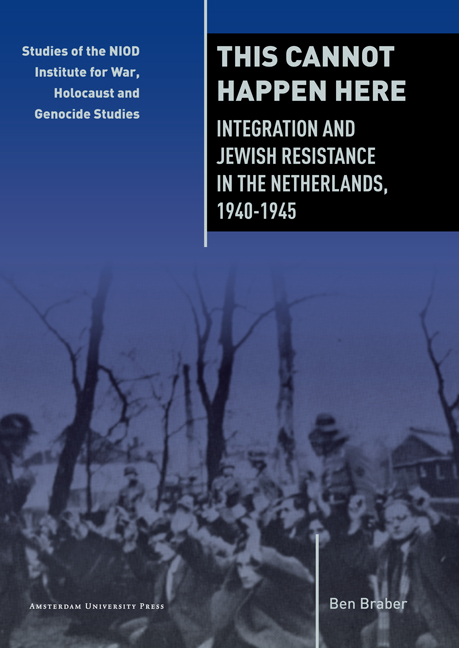6 - Deportation (July 1942 – September 1944)
Published online by Cambridge University Press: 15 January 2021
Summary
In 1942 Joachim Simon wrote in a letter to a friend in a concentration camp:
When I think about you, being incarcerated, I am grateful that I can be active. I still have the opportunity to try – and that is most important for us. It is still possible to fight against fate – even if we will lose. And if I have an accident tomorrow, I can have peace. I will not regret for one moment what I have done. We had the courage to fight and if we failed, that is our fate. And the thought that we have not only fought for ourselves gives us courage.
Simon was a Palestine Pioneer. The activity he referred to in his letter consisted of rescuing others and helping them to hide or flee to safety. It was one of the responses to the deportation of the Jews from the Netherlands.
When the deportations started in July 1942, the United States had already entered the Second World War on the Allied side. The German armies had suffered some setbacks, but were still able to mount substantive offences. In the Soviet Union, which had been invaded in June 1941, the Germans had to withdraw from Moscow, but continued to besiege Leningrad and were on the attack in Stalingrad. In the Netherlands, with a wave of raids, which had started in July 1941, the Germans terrorised the Jewish population. In December 1941 Jews with a foreign nationality had been ordered to report for voluntary emigration. A month later German Jews were transported to Westerbork, the former refugee camp in the eastern part of the country. In June 1942, when insufficient numbers of Jewish men volunteered to work in special labour camps, they were forced to enlist. These measures and the deportation orders from July 1942 were implemented through the Jewish Council, sometimes with assistance from the Dutch police and civil services. In July the first Jews were ordered to report for removal to Westerbork, which became a transit camp from where the first deportation train to Auschwitz left during the night of 14 and 15 July 1942. By September 1943 more than 93,000 persons had been deported, a figure that rose to about 107,000 in September 1944.
- Type
- Chapter
- Information
- This Cannot Happen HereIntegration and Jewish Resistance in the Netherlands, 1940–1945, pp. 115 - 140Publisher: Amsterdam University PressPrint publication year: 2013



